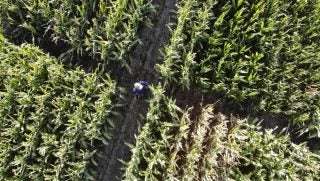For the first time ever, scientists are gaining ground in the race against wheat stem rust, a pathogen that threatens global food security because of its ability to kill wheat. A team of researchers from the University of Sydney, Commonwealth Scientific and Industrial Research Organisation (CSIRO), Rothamsted Research, the University of Minnesota, and USDA have discovered the first rust virulence molecule that wheat plants detect to ‘switch on’ built-in resistance and stave off the disease.
Wheat stem rust, historically the most dangerous pathogen of wheat is caused by the fungus Puccinia graminis f. sp. tritici (Pgt). A particularly destructive form of Pgt, Ug99, has recently received much attention because of its spread across Africa and the Middle East. Such geographic expansion and the emergence of other virulent strains related and non-related to Ug99 have caused great concerns for wheat production. Even more alarming is the recent detection of new virulent strains in Europe which could easily make their way to the U.S. Findings by this group of scientists published in Science reveal how the immune system in plants resistant to this disease directly recognizes a specific fungal protein to subsequently “turn on” resistance and fend off the pathogen.
“For the first time, it will be possible to do DNA testing to identify whether a rust in a wheat crop anywhere in the world can overcome a rust-resistance gene, called Sr50, which is being introduced in high-yielding wheat varieties,” said University of Sydney Professor of Sustainable Agriculture Robert Park, co-leader of the research team. “This will indicate whether or not a given wheat crop needs to be sprayed with expensive fungicide quickly to protect against rust, which would otherwise devastate the crop in a matter of weeks.”
Co-corresponding author, University of Minnesota Plant Pathology Adjunct Professor Peter Dodds from CSIRO, said demand for wheat in the developing world was expected to jump 60 percent by 2050 and in economic terms alone the ramifications were huge.
“Now that we’ve identified how stem rust strains are able to overcome Sr50 resistance – by mutation of a gene we’ve identified called AvrSr50 – this information can be used to help prioritize resistance genes for deployment,” said Dodds.


